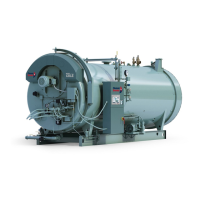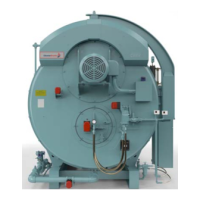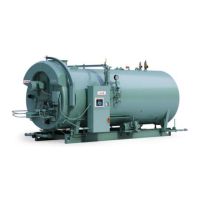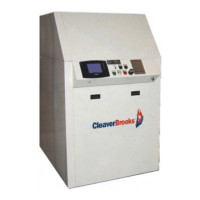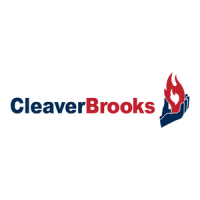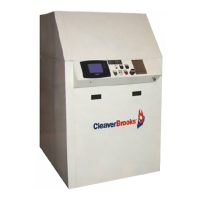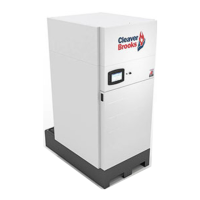Installation
2-6
750-382
CBT
If building supply gas pressure is greater than 1 psig (27.8” WC), an upstream regulator with overpressure pro-
tection and proper gas venting will be required and must be piped to a safe point of discharge. For multiple boil-
ler installations, a dedicated gas pressure regulator is required for each boiler to ensure consistent gas pressure
at the boiler.
Drip legs are required on any vertical piping at the gas supply to each boiler so that any dirt, weld slag, or debris
can deposit in the drip leg rather than into the boiler gas train. The bottom of the drip leg should be removable
without disassembling any gas piping. The connected piping to the boiler should be supported from pipe sup-
ports and not supported by the boiler gas train or the bottom of the drip leg.
All gas piping and components to the boiler gas train connection must comply with NFPA 54, local codes, and
utility requirements as a minimum. Only gas approved fittings, valves, or pipe should be used. Standard industry
practice for gas piping is normally Schedule 40 black iron pipe and fittings.
Before starting the unit(s) all piping must be cleaned to prevent the entrance of debris into the boiler gas train.
Piping should be tested as noted in NFPA 54, with the boiler isolated during tests.
After initial startup, the inlet screen to the gas valve should be checked and cleaned for any debris buildup.
Gas Supply Pipe Sizing - For proper operation of a single unit or a multiple unit installation, we recommend that
the gas piping be sized to allow no more than 0.3" w.c. pressure drop from the source (gas header or utility
meter) to the final unit location. Higher supply pressure systems may allow for a greater pressure drop. In ALL
cases, minimum supply pressures must be met for proper operation of the boiler(s). The gas supplier (utility)
should be consulted to confirm that sufficient volume and normal pressure are provided to the building at the
discharge side of the gas meter or supply pipe.
For installations of new boilers into an existing building, gas pressure should be measured with a manometer to
ensure sufficient pressure is available. A survey of all connected “gas using devices” should be made. If appli-
ances other than the boiler or boilers are connected to the gas supply line, then a determination must be made of
how much flow volume will be demanded at one time and the pressure drop requirement when all appliances
are firing.
The total length of gas piping and all fittings must be considered when sizing the gas piping. Total equivalent
length should be calculated from the utility meter or source to the final unit connection. As a minimum guideline,
gas piping Tables 2-4 and 2-5 should be used. The data in these tables is from the NFPA 54 source book, 2006
edition.
To verify the input of each device that is connected to the gas piping, obtain the btu/hr input and divide this input
by the calorific value of the gas that will be utilized. For instance, a 40 HP unit with 1,613,253 btu/hr input
divided by a gas calorific value of 1060 will result in a flow of 1,522 CFH (cubic ft/hr). The single boiler is
approximately 20 feet from the gas supply header source. And with a measured gas supply pressure of 10" w.c.
we find from Table 2-4 that a supply pipe size of 2" should be used as a minimum.
